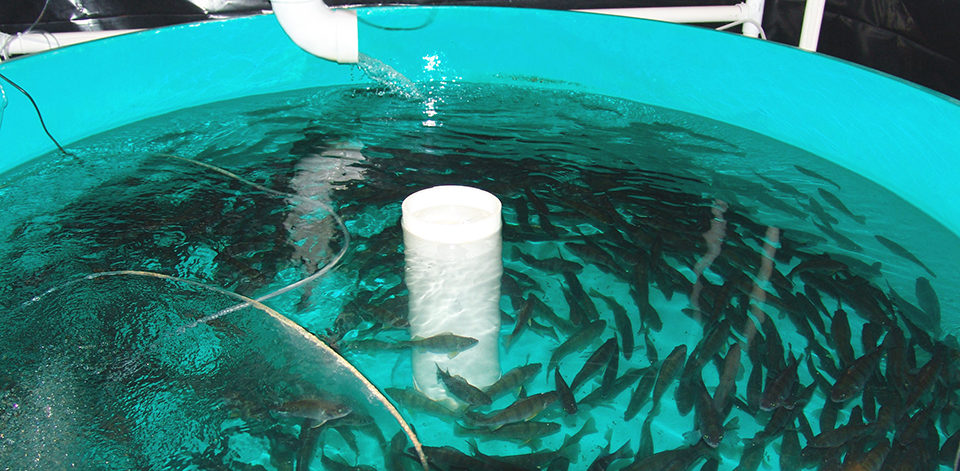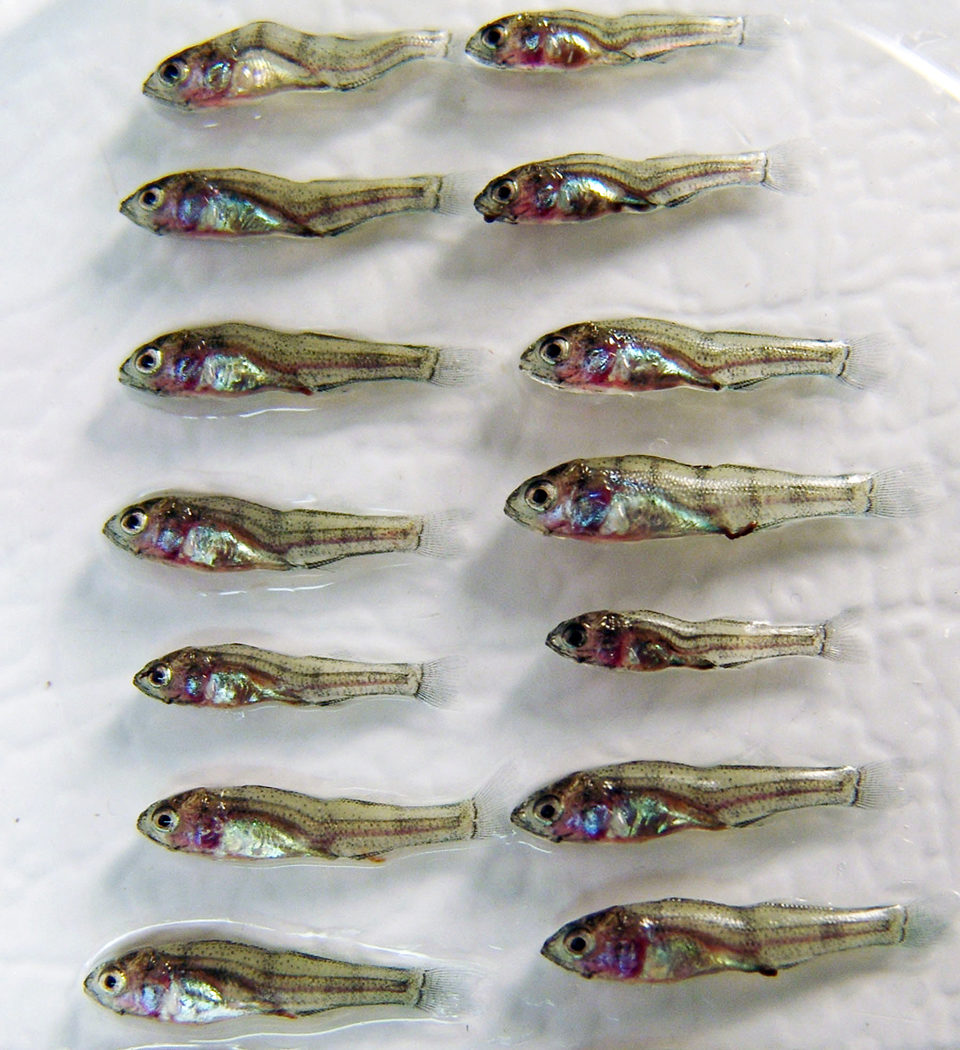Perspectives on increasing finfish larviculture success

The potential benefits from the use of probiotics – beneficial microorganisms or their constituents, cellular fractions or metabolites – for preventive care in the aquaculture industry have yet to be fully realized. More widespread use of probiotics could offer cost savings in health management practices, given the increasing cost of remedial veterinary care and the need for more environmentally sound approaches to aquatic animal health management.
In addition to improvements in animal health and production, the judicious use of probiotics may also offer benefits for marketing and public perception, as well as improved regulatory compliance due to reduced environmental footprints for growout operations.
The use of probiotics is not a new concept, as their performance and effectiveness have been demonstrated in other livestock industries. An increasing number of dairy farmers embrace probiotics in their preventive care schedules to reduce calf diarrhea, mastitis in milking cows and other adverse effects in their herds. Poultry operations include probiotics in feeds to reduce antibiotic dosage, while achieving similar levels of growth enhancement and disease control. More recently, several commercial probiotic products have become available for the aquaculture industry, with varying degrees of performance and efficacy.
Challenges
Several challenges impede the widespread adoption of probiotics in the aquaculture industry, mostly stemming from a knowledge gap on what exactly constitutes a successful probiotic for aquatic organisms. In most aquatic production systems, fish and environmental microbiota are not clearly characterized, and thus it is not clear which species are relevant to consider as probiotics, or conversely, which microorganisms might be detrimental in a production environment.
Also, the gut microbial compositions of aquatic species can be dynamic over different life stages. What is effective as a probiotic in an early larval stage may not be successful or necessary at a later life stage.
A final challenge is that current fish-farming practices for water management can actually inhibit the successful establishment of beneficial microbial communities in their production systems. A better understanding of such issues is essential to increase the successful use of probiotics in aquaculture systems.
Larviculture issues
The critical factors that determine successful development of a fish species for aquaculture have often derived from closing the life cycle of the species in captivity. Despite major progress with many species, most production losses still occur in larviculture and early life stages.
Many factors contribute to these losses, but some of the more common issues are related to incomplete nutrition profiles for larval feeds, the occurrence of developmental defects and major disease events during larviculture. Major larval fish mortality events also coincide with developmental milestones such as the depletion of the yolk sac in fish, opening of the incipient gut tract, inflation of the swim bladder, ontogenic shifts from different plankton or particulate feed size and type, and feed training toward formulated growout diets.
It is during these critical time points that probiotics and prebiotics, non-digestible additives that induce growth or immune function, could provide needed micronutrients that prime immune responses in larval fish, thus increasing their survival in culture.
Probiotic use
Several viable routes of probiotic dosing can be applied in larval aquaculture. Immersion and microcosm approaches appear to be the simplest in execution.
In immersion, fish are exposed to appropriate concentrations of probiotics in a contained soak, while in the microcosm approach, free-forming microbial communities are allowed to develop within the production system. While these approaches minimize handling stress, they limit the amount of dosing control that can be attained, and as such may be somewhat unreliable.
Ingestion of a stable probiotic added to formulated feed seems a natural solution to the dosage problem, since feeds can be tailored to specific sizes, concentrations and nutritional profiles. However, for many species, formulated feeds continue to be problematic to apply during early life stages. Many larval fish target a specific food size or color, or only respond to other stimuli such as feed movement. For these reasons, live feed continues to play a prominent part in larviculture.
Enrichment of live feeds with probiotics is a potential approach for improving the nutritional and immune profiles of larval feeds. Additionally, since many live feed species used in aquaculture are non-selective feeders, probiotic particles could be introduced as enrichment medium.
The use of enriched live feed could provide dual benefits. Since the live feed would process and predigest the probiotic, there might be increased bioavailability of the required nutrients and immune stimulants for the larval fish, resulting in better nutritional supplementation. Although most commercially available live feed enrichment formulations focus on fatty acid supplementation and abiotic nutrients, probiotic emulsions, particulates or suspensions could be used to introduce additional nutrients and probiotics into live feeds.
Yellow perch research
The authors’ research team is focusing on reducing yellow perch early life stage mortality events that occur during the first 28 days of culture. Probiotics could be introduced as preventive treatments to reduce disease and mortality at two time points via live feeds.
A first time point would be during the transition from yolk sac consumption to incipient gut tract opening. Providing a first feeding with probiotic-enriched rotifers could promote initial gut colonization with beneficial microbes, thus resulting in competitive exclusion of potentially harmful microbes from the gut of the fish.
If the gut tract is colonized by beneficial organisms, their ability to occupy all available surfaces within the intestine would impede the establishment of less-desirable species. The probiotics would also provide the fish with an immune stimulus derived from the normal metabolic by-products of the colonizing microbes, as has been demonstrated with lactic acid-producing bacteria.
A second critical time point target would be the ontogenic shift to large plankton or particulate feeding. Feeding larval yellow perch with probiotic-enriched Artemia nauplii during this period could prime the immune system, reducing stress-induced diseases and infections.
Some preliminary success in enrichment of live feeds has been seen with the addition of whole or broken-down yeast cells, or even cell wall components has been observed in other fish species. However, challenges persist in the successful application of live feed enrichment with probiotics.
Differences in probiotic viability are observed during and after enrichment, making batch to batch efficiency hard to predict or control. Additionally, there is little consensus on the degree of efficacy of probiotic transfer from live feeds to larval fish.

Perspectives
While not completely understood, probiotics can directly and indirectly benefit early life stages in fish, increasing the likelihood of success in hatchery and growout operations. Thus, early use of probiotics in larviculture should target the major developmental events, as well as ontogenic shifts in feeding preferences, habitat use or behavior, along with the use of probiotics as immune modulators during periods of high stress, such as feed training, sizing, grading and tank transfers.
Future research should compare the efficacy of a single probiotic species or strain to that of a community strategy. Also, what are the optimal routes of probiotic enrichment and delivery media to the live feed – direct addition to the production tank, processing of the probiotic into emulsions, inactivation of the probiotic or further processing, such as freeze drying?
Future research in this area should evaluate the efficacy of a single probiotic species or strain versus multiple species, optimal routes of probiotic enrichment and delivery using feeds, and the type of probiotic processing needed for successful live and formulated feed enrichment.
(Editor’s Note: This article was originally published in the July/October 2013 print edition of the Global Aquaculture Advocate.)
Authors
-
Dr. Osvaldo Sepulveda Villet
U.S. Department of Agriculture
Agricultural Research Service
600 East Greenfield Avenue
Milwaukee, Wisconsin 53204 USA -
Dr. Brian Shepherd
U.S. Department of Agriculture
Agricultural Research Service
600 East Greenfield Avenue
Milwaukee, Wisconsin 53204 USA -
Dr. Brian Shepherd
U.S. Department of Agriculture
Agricultural Research Service
600 East Greenfield Avenue
Milwaukee, Wisconsin 53204 USA -
Dr. Fred Binkowski
School of Freshwater Sciences
University of Wisconsin
Milwaukee, Wisconsin, USA -
Dr. Wendy Sealey
U.S. Fish and Wildlife Service
Bozeman Fish Technology Center
Bozeman, Montana, USA
Tagged With
Related Posts

Health & Welfare
Assessment of supplemental Bacillus probiotics in whiteleg shrimp juveniles
Results of a feeding study supplementing probiotics in the diet showed that when the Bacillus species were complemented in an appropriate concentration into feeds, the growth and feed efficiency of whiteleg shrimp could be improved.

Health & Welfare
Bacillus probiotics benefit tilapia rearing under challenging conditions in Brazil
A recent study that evaluated the benefits of using probiotics with a balanced mixture of Bacillus bacteria strains to inhibit pathogenic bacteria in tilapia.

Health & Welfare
Bacillus probiotics improve hatchery, nursery production in EMS-hit Mexico
In early 2014, a trial to evaluate the effects of a mixture of Bacillus strains on early mortality syndrome bacteria during the larviculture and nursery phases for shrimp was carried out at a commercial hatchery in Mexico.

Health & Welfare
Culture water pre-inoculation of probiotics in Pacific white shrimp nurseries
This study showed that a longer inoculation of probiotics will improve shrimp postlarvae growth and survival, and that a new technique developed for more accurately estimating postlarvae weight can significantly reduce the food that must be supplied.


